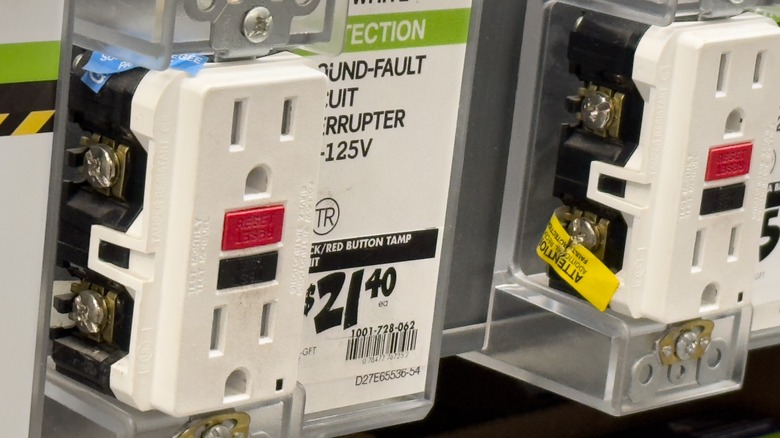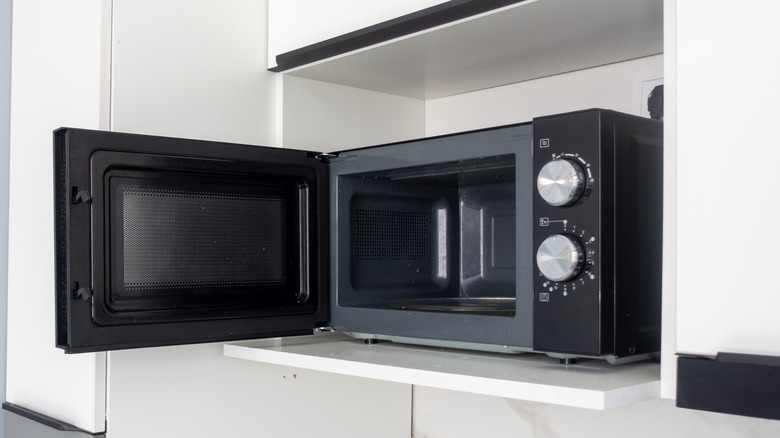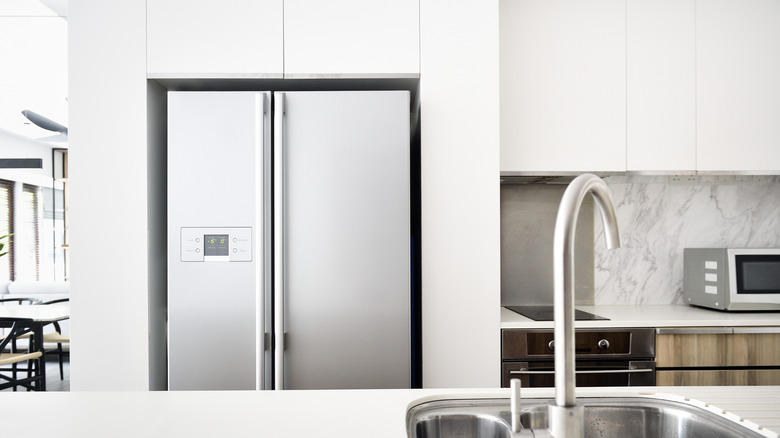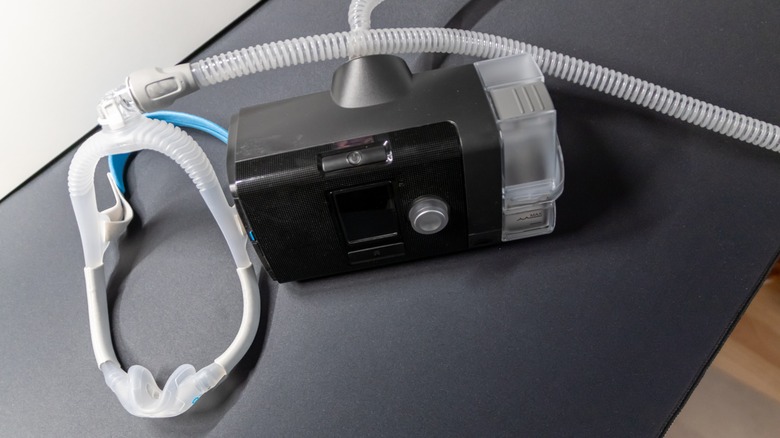3 Things You Should Never Plug Into Your Home's GFCI Outlets
There are 15 standardized types of domestic electrical outlet plugs in use worldwide. The standard North American outlet, for example, has two vertical slots and a round hole beneath them for grounding. And if you've ever been to Europe, you've probably noticed that they use Type C outlets, which have two round holes instead of the flat slots used in North America. The different holes and shapes in electrical outlets are each designed for a specific purpose, for compatibility with the region's voltage and current standards, and to provide safety.
Ground Fault Circuit Interrupters (GFCIs) are essentially safety devices. They protect from electric shock by quickly shutting off power in the event of a ground fault. In practical terms, if a device comes in contact with water, the GFCI will cut the electricity almost instantly to prevent a potentially deadly shock. This is why GFCI outlets are commonly used in kitchens, laundry rooms, garages, basements, and outdoor — anywhere electrical devices or outlets could come into contact with water or moisture. This doesn't mean plugging a device into a GFCI outlet automatically makes your household safer. In fact, there are some devices you should never plug into your home's GFCI outlets.
Microwave ovens
Microwave ovens and GFCI outlets are not a good combination. Microwaves draw a lot of power, and that can cause a GFCI outlet to trip. If you plug your microwave into one, the outlet could shut off almost immediately, cutting power to the microwave. To get it up and running again, you would need to reset the GFCI outlet. While not dangerous, this is highly inconvenient — that's why it's called nuisance tripping. Nuisance tripping is a term used to describe what happens in situations when a safety device, like a GFCI outlet, shuts off power even though there is no actual electrical hazard.
There's another reason why microwaves and GFCI outlets don't mix well: Microwave ovens emit electromagnetic interference, which can "confuse" a GFCI outlet, causing it to trip. Thus, if you have a large microwave or one that is built-in, it is best to have it on a dedicated circuit to avoid any inconvenience of nuisance tripping.
Refrigerators and freezers
GFCI outlets are commonly installed in kitchens, which makes perfect sense when you consider that this is probably where electronics are most likely to come into contact with water. You might think, then, that plugging your fridge into a GFCI outlet would be a smart move, but that is actually not recommended at all.
Refrigerators and freezers don't use a large amount of electricity, but their motors cycle on and off, which creates fluctuations in the flow of electrical current. GFCI outlets may mistakenly interpret these fluctuations as ground faults, cutting power to the appliance. If you fail to notice that on time, you'll end up with a refrigerator full of spoiled food.
Ideally, you should have a dedicated, non-GFCI 120V circuit specifically for your refrigerator or freezer. Another option is to use a GFCI breaker instead of a GFCI outlet, as breakers can handle fluctuations better. Failing that, you could consider moving the refrigerator to a standard outlet that isn't GFCI-protected, but only as long as doing so complies with electrical codes in your area.
Medical devices
A piece of medical equipment is probably the last thing you'd want to plug into a GFCI outlet. Some medical devices have electronic components that can react to slight fluctuations in electrical current, which can in turn cause a GFCI to misidentify them as faults and shut off power. These nuisance trips can be a serious problem when a device is relied on for health or safety — something like a CPAP machine needs constant, reliable power without the risk of nuisance trips cutting it off unexpectedly.
It's best not to even imagine the scenarios that could unfold if, say, an oxygen concentrator were to suddenly lose power in the middle of the night. To avoid any potential issues, plug medical equipment into a standard, dedicated outlet, ideally one that isn't shared with other appliances. It's also a good idea to consult an electrician or healthcare provider about the safest power setup for your medical equipment, and to consider investing in a generator for your home.



